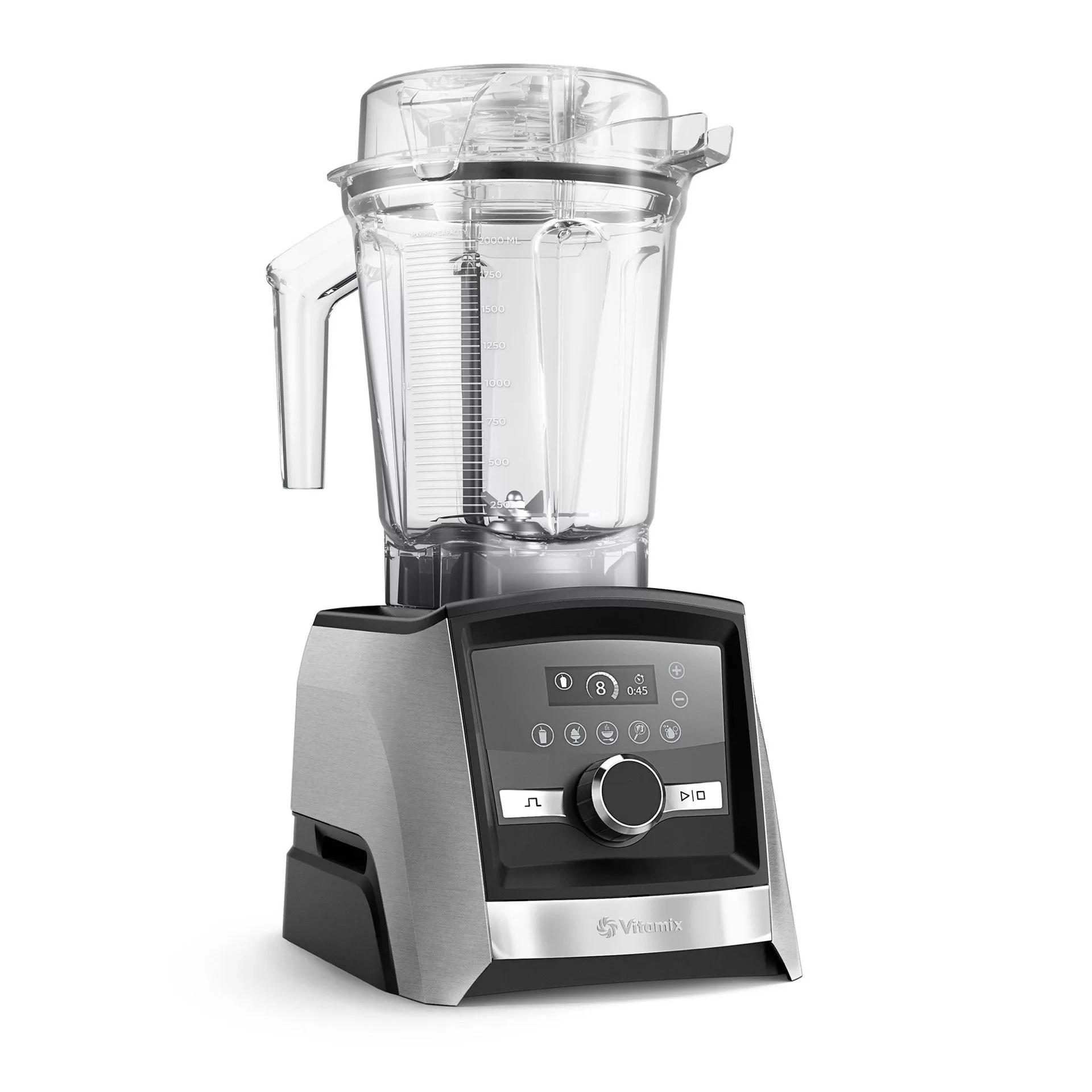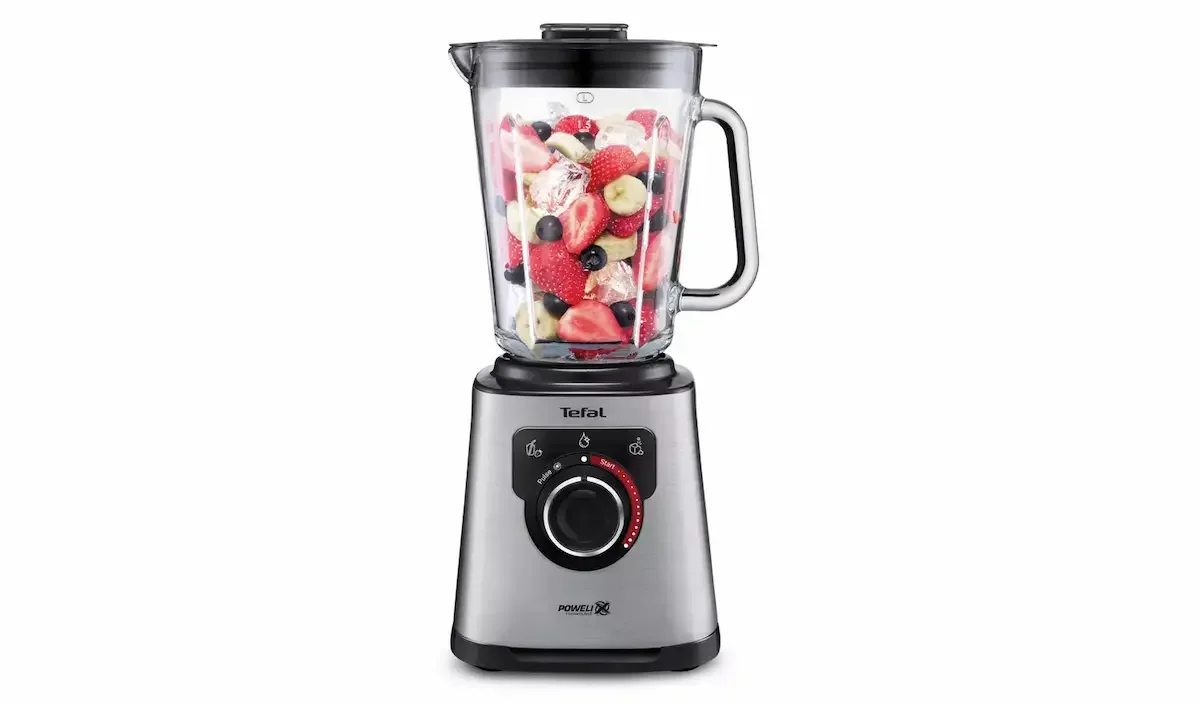Soup Season Ready: 3 Blenders That Go From Cold Smoothies to Hot Soups (2026)
Most blenders handle cold smoothies or hot soups, but very few manage both. When the jug heats up, weaker machines splatter, leak or shut themselves down. Blend from cold and you get inconsistent textures or long blending times. If you want a model that can move confidently from summer smoothies to winter soup recipes, you need a blender designed for hot liquids, steam pressure and thicker blends. A genuine hot and cold blender should feel as reliable making tomato soup as it does crushing frozen berries.
Searches for the best hot and cold blender in the UK have climbed, especially as more people look for one appliance that replaces both a smoothie maker and a soup maker. A good heated blender needs safe ventilation, steady power under load and a jug that can manage steam without forcing the lid upward. It should also blend hot vegetables smoothly without leaving gritty pieces behind. The best models balance power, heat control and ease of cleaning, which makes a real difference if you blend often.
After reviewing long-term user feedback, expert opinions and brand reliability, three blenders stood out. These are the Ninja Foodi Hot & Cold Blender (HB150UK), the Vitamix A3500i and the Tefal PerfectMix Cook BL83SD40. Each one handles hot soups, cold smoothies and everything in between. One earns our Nest Tested Pick, and we explain why later. You will also find a detailed Buying Guide and a clear How We Evaluated section so you know exactly how these decisions were made, without any flapping about.
Ninja Foodi Hot & Cold Blender (HB150UK)
The Ninja Foodi Hot and Cold Blender is built for people who want one appliance that can handle both frozen fruit and steaming hot soups. It has a built-in heating element that cooks ingredients directly in the jug, which removes the need to transfer hot liquids from a pan to a blender. The jug walls are thick and stable, and the secure vented lid helps manage steam pressure safely during hot blends. For anyone who wants smooth soups without splatter, it is one of the most practical options in the UK.
The interface is straightforward and the preset modes cover everything from chunky soups to smooth purees. The motor remains steady under load, and the jug design keeps ingredients circulating whether you are blending hot vegetables or cold berries.
Key Specs
• High-power motor
• Integrated heating element
• Heat-safe, vented lid
• Soup, smoothie and blend presets
• Thick, durable jug designed for hot liquids
What It Does Well
The Ninja stands out because it can cook ingredients from scratch and then blend them to a smooth texture without moving anything to the hob. It is particularly effective for tomato soup, butternut squash and other vegetables that become thick when heated. The heating element gives you predictable results and removes the risk of steam pushing the lid up. Cold blends are equally strong, especially for icy smoothies or mixed fruit. It is one of the few models that genuinely handles temperature changes without feeling strained.
Where It Could Be Better
The jug is heavy because of the heating element, which may not suit people with smaller kitchens or limited storage. Noise levels are moderate but not the quietest when working at high speeds. Some users may find the presets slightly rigid if they prefer full manual control.
Who It’s Best For
The Ninja Foodi Hot and Cold Blender suits anyone who wants a reliable all-season appliance. It is ideal for people who batch-prep soup, make cold smoothies in summer or want a safe way to blend hot liquids without transferring them from a pan. It works well for busy households that want consistent results without much intervention.
Pros
• Built-in heating element for true hot blending
• Strong performance with both hot soups and cold smoothies
• Stable jug with safe steam management
• Good preset modes for convenience
Cons
• Heavy jug
• Moderate noise at high speeds
• Presets may feel limiting for some users
Where to Buy
Vitamix A3500i
The Vitamix A3500i is a premium choice for people who want power, consistency and long-term reliability in one machine. It does not have a built-in heating element, but it uses friction to heat ingredients as it blends. If you run it on high speed for several minutes, the jug becomes hot enough to turn chopped vegetables into a steaming soup. This approach gives you a smooth, velvety texture without worrying about pressure build-up from boiling liquids.
The jug design is wide and low, which helps ingredients circulate freely whether they start hot or cold. The controls are simple once you know the layout, and the build quality feels solid enough for heavy daily use.
Key Specs
• High-power motor
• Friction-heat capability for soups
• Variable speed dial with pulse
• Large, stable jug
• Touchscreen controls
What It Does Well
The A3500i produces some of the smoothest soup textures available from a consumer blender. The friction heat method is useful because you avoid dealing with steam or vented lids while still achieving a piping hot result. For cold blends, it performs exactly as you would expect from a Vitamix, handling frozen fruit, ice and thick mixes with confidence. It is excellent for blended soups that need complete smoothness, such as tomato or roasted pepper.
Where It Could Be Better
Because it relies on friction rather than an internal heating system, it takes a few minutes to warm ingredients fully. It is also on the louder side at high speeds. Size may be a concern for smaller kitchens, and the price places it firmly in the premium category.
Who It’s Best For
The Vitamix A3500i suits anyone who wants restaurant-level smoothness in both cold smoothies and hot soups. It is ideal for people who blend daily and want a model that feels solid, consistent and powerful enough to handle anything from iced shakes to blended winter recipes.
Pros
• Exceptional smoothness for hot soups
• Friction heat avoids steam pressure issues
• Excellent performance with frozen fruit
• Stable and reliable during thick blends
Cons
• Expensive
• Loud at high speeds
• Needs a few minutes to heat ingredients
Where to buy
Tefal PerfectMix Cook BL83SD40
The Tefal PerfectMix Cook BL83SD40 is a practical mid-range option for households that want reliable hot and cold blending without paying premium prices. It includes built-in heating modes that cook ingredients directly in the jug, which is ideal for quick weekday soups or autumn batch cooking. The controls are simple and the preset soup programmes take away most of the guesswork, making it a friendly choice for people who want convenience.
The jug is sturdy and handles temperature changes well. It is also slightly lighter than some other heated models, which makes it easier to move around the kitchen. For cold blends, the motor performs well enough to handle frozen fruit and everyday smoothie mixes.
Key Specs
• High-power motor suitable for hot and cold blending
• Integrated heating modes
• Preset programmes for smooth and chunky soups
• Sturdy heat-safe jug
• Multiple speed settings
What It Does Well
The Tefal shines in everyday soup making. The preset modes produce consistent results and the heating function cooks vegetables evenly before blending them to the desired texture. It is especially good for blended root vegetable soups and simple tomato recipes. For cold drinks, it offers respectable performance and produces smooth enough results for daily smoothies, protein shakes and mixed berry blends.
Where It Could Be Better
It is not as powerful as premium models, so achieving very silky textures may take longer. The jug shape is narrower at the base, which can occasionally cause ingredients to sit higher up the sides during thicker blends. Noise levels are moderate and similar to other mid-range hot and cold blenders.
Who It’s Best For
The PerfectMix Cook suits people who want a dependable heated blender without the cost of a top-tier model. It is ideal for simple soups, everyday smoothies and general family use. If you want straightforward hot and cold blending with predictable results, this model offers solid value.
Pros
• Reliable heating and blending performance
• Useful soup presets
• Sturdy jug that manages heat well
• Good value for money
Cons
• Not as powerful as premium options
• Occasional need to scrape down the sides
• Takes slightly longer for very smooth textures
Where to buy
| Blender | Strengths | Weaknesses | Best For |
|---|---|---|---|
| Ninja Foodi Hot & Cold Blender (HB150UK) |
|
|
|
| Vitamix A3500i |
|
|
|
| Tefal PerfectMix Cook BL83SD40 |
|
|
|
Hot & Cold Blender Comparison
Golden Egg Pick
When it comes to handling both hot soups and cold smoothies without fuss, one blender consistently delivers the most reliable all-round experience: the Ninja Foodi Hot and Cold Blender (HB150UK). It combines strong heating performance with dependable cold-blend power, and the preset modes take away the guesswork. The integrated heating element cooks ingredients directly in the jug, which is safer and easier than moving hot liquids from a pan. For most UK households, this creates a smoother, more predictable workflow for weeknight soups and morning smoothies.
The Vitamix A3500i remains the top premium option, especially if you want extremely smooth soup textures. Its friction-heat method avoids steam pressure, and it excels with frozen fruit. However, it is expensive and takes a few minutes to warm ingredients fully. The Tefal PerfectMix Cook BL83SD40 offers strong value, especially for simple family soups, but it cannot match the Ninja for consistency or cold-blend power.
The Ninja Foodi Hot and Cold Blender earns the Nest Tested Pick because it offers the best balance of convenience, heat control and everyday usability. It handles hot liquids safely, performs well with frozen ingredients and produces consistent textures with very little adjustment. For most buyers, it is the most complete hot and cold blender available in the UK.
What to Know Before You Buy
Choosing a blender that can move from cold smoothies to hot soups is very different from picking a standard smoothie blender. A true hot and cold model must handle temperature changes, manage steam safely and produce smooth results without splatter. Power matters, but how the machine controls heat and circulation is just as important.
A blender with an integrated heating element, such as the Ninja Foodi Hot and Cold Blender, cooks ingredients directly in the jug. This is ideal for buyers who want a blender that replaces a soup maker and reduces the number of appliances in the kitchen. These models tend to be heavier because of the heating system, but they offer predictable results and better control over thick, blended soups.
Friction-heat models, such as the Vitamix A3500i, work differently. They generate heat through long, high-speed blending. This avoids steam pressure issues and removes the need for a vented lid, which some people prefer. These models are excellent for silky, very smooth soups but take a little more time to heat ingredients. They also tend to be louder because they rely on sustained high speeds.
Jug design affects both hot and cold blending. A wider jug encourages strong circulation for hot vegetables and cold fruit, while a narrow base can trap ingredients unless the blades pull downward effectively. For hot soups, a jug that handles steam well and stays stable on the worktop is essential. Look for strong jug walls, a vented lid and a locking system that prevents pressure from forcing the lid upward.
Presets make a difference when switching between seasons. A soup programme that heats and blends in stages is useful for thicker ingredients such as carrots or squash. A smooth blend mode helps achieve a velvety finish for tomato soup or roasted pepper soup. For cold blends, presets help break down frozen fruit without manual adjustments.
Noise levels matter if you blend early in the morning or live in a flat. Heated blenders can be louder than standard models because they run longer cycles. A stable base helps reduce rattling and makes the machine safer when dealing with hot liquids. If noise is a priority, look for models with smooth acceleration rather than abrupt jumps in speed.
Cleaning is a practical consideration. Hot soups cling to blades and jug walls, so an easy-clean design saves time. Some jugs have fewer internal ridges and rinse out quickly. A removable blade assembly can help, although it adds another part to clean. Single-cup blending is less relevant for hot liquids, but it is useful for cold smoothies.
Budget plays a clear role. Premium blenders deliver exceptional smoothness and feel more powerful, but mid-range models now offer impressive all-season performance at much lower prices. If you mainly want weeknight soups and basic smoothies, a mid-range model such as the Tefal PerfectMix Cook will be enough. If you want restaurant-style smoothness or blend every day, a premium option is easier to justify.
A good hot and cold blender should feel like a single appliance that replaces both a soup maker and a smoothie blender. If it can handle frozen fruit, hot vegetables and everything in between without leaking, shaking or overheating, you have chosen a model that will work all year round.
How We Evaluated and Chose Our Recommendations
To understand which hot and cold blenders offer the best all-season performance, we examined long-term user experiences, independent expert reviews and brand reliability across the UK market. Our focus was on how well each model manages both hot liquids and cold ingredients without causing mess, overheating or leaving inconsistent textures.
We looked closely at how each jug handles temperature changes. Hot blends create steam, and a good hot and cold blender must manage that safely with a stable jug and a vented lid. We reviewed how effectively the blenders circulate ingredients during thick, hot recipes as well as their ability to break down frozen fruit and ice without stalling. Real-world issues such as splatter, lid movement and scorching were all factored in.
We also considered the structure of preset programmes. Soup modes that heat and blend in stages help with thicker vegetables, while smooth blend settings matter for cold drinks. We evaluated how intuitive the controls felt, how easy the jugs were to clean after hot blends and whether the machines fit comfortably into typical UK kitchens.
Value for money played a significant role. Premium models needed to justify their higher cost with superior texture consistency and dependable year-round performance. Mid-range options were judged on how well they balanced heating ability, cold-blend power and practicality for everyday use.
The final selections reflect blenders that handle both extremes effectively: frozen fruit for summer smoothies and hot vegetables for winter soups. Each one offers strong build quality, predictable performance and a level of day-to-day convenience that makes them suitable for households wanting one appliance for both tasks.
Frequently Asked Questions
Can I put boiling liquid straight into a blender
Most blenders are not designed for boiling liquid. Heated models are built to cook ingredients from room temperature, which avoids the risk of steam forcing the lid open. If you are using a standard blender, allow the liquid to cool slightly before blending.
Is it safe to blend hot soup in a blender
It is safe if the blender is designed for hot ingredients and has a vented lid to release steam. Heated blenders and friction-heat models are made for this type of use, and they reduce the risk of splatter or pressure build-up.
Do I need a heating element to make soup in a blender
No. Blenders with heating elements cook the ingredients directly in the jug, but friction-heat models can warm soup through extended high-speed blending. They take longer but still reach a steaming temperature.
Why does my blender splatter when blending soup
Splatter usually happens when steam builds up under a closed lid or when blending begins at a speed that is too high. Start on a low setting and increase gradually, or use a preset that is designed for hot liquids.
Can I replace a soup maker with a hot and cold blender
Yes. Heated blenders can replace a standalone soup maker if you mainly want smooth soups. They offer more flexibility and better texture control, especially for recipes with varied ingredients.
What jug size is best for soup
A jug between 1.5 and 2 litres suits most households. Larger jugs are better for batch cooking, while smaller jugs heat faster but may not produce enough for multiple servings.
Do hot and cold blenders work well with frozen fruit
Most do, as long as the motor and blade system are strong enough. A good blender should handle both frozen ingredients and hot vegetables without struggling or stalling.
Is cleaning harder after making soup
Yes, soup often sticks more than smoothies. Rinsing the jug while it is still warm helps, and some models have a quick-clean cycle to loosen residue. A simple jug shape also makes a noticeable difference.









